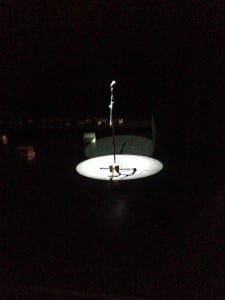With it decided that the verbatim and expectation monologues would be lit by spotlights it was time to address lighting the rest of the scenes. On the whole I decided to use general washes or pools of light to light scenes in which there would be more than one actor on stage or if there was a lot of dialogue, such as the songs. This was so the audience could see and hear the actors clearly as ‘actors who are difficult to see will usually be difficult to hear’ (Reid 2001, p1).
I decided to only light part of the stage if I wanted to draw attention away from the actors setting up for the next scene, for example Hope’s monologues took place at the front of the stage and were lit with strip lighting so upstage could be set up in blackout.
We also used torches on stage as a form of lighting whilst the rest of the stage was in blackout, with the light focusing on the character’s shoes. This idea of the actors being in control of their lighting and deciding what the audience could see and what they could not, was influenced by Macbeth in Pitch Black (London Contemporary Theatre, 2013) which I saw at Lincoln Drill Hall. I found as an audience member my other senses were heightened when my sight was taken away and particularly for Ashleigh’s diaries as we wanted the audience to focus on the story they were hearing and the movement of the actors’ feet.
WORKS CITED
Reid, F. (2001) The Stage Lighting Handbook. Sixth Edition.London and New York: Routledge.
London Contemporary Theatre (2013) Macbeth in Pitch Black. [performance] Lincoln: Lincoln Drill Hall, 8 Nov.


